Kitchens have evolved dramatically over the decades, with some charming elements fading into history while others disappeared for good reason. Professional designers often reminisce about certain vintage features that brought character and functionality to the heart of the home.
At the same time, they’re grateful some questionable trends have been banished to the design dustbin. Let’s explore which retro kitchen elements deserve a comeback and which should remain firmly in the past.
1. Breakfast Nooks Worth Waking Up For

Built-in bench seating tucked into a cozy corner creates the perfect spot for morning coffee or casual family meals. These space-saving nooks maximize awkward corners while adding instant charm.
Modern versions can incorporate storage beneath cushioned seats, combining practicality with comfort. Designers appreciate how nooks encourage lingering conversations and create natural gathering spots without consuming valuable kitchen real estate.
2. Separate Pantry Rooms
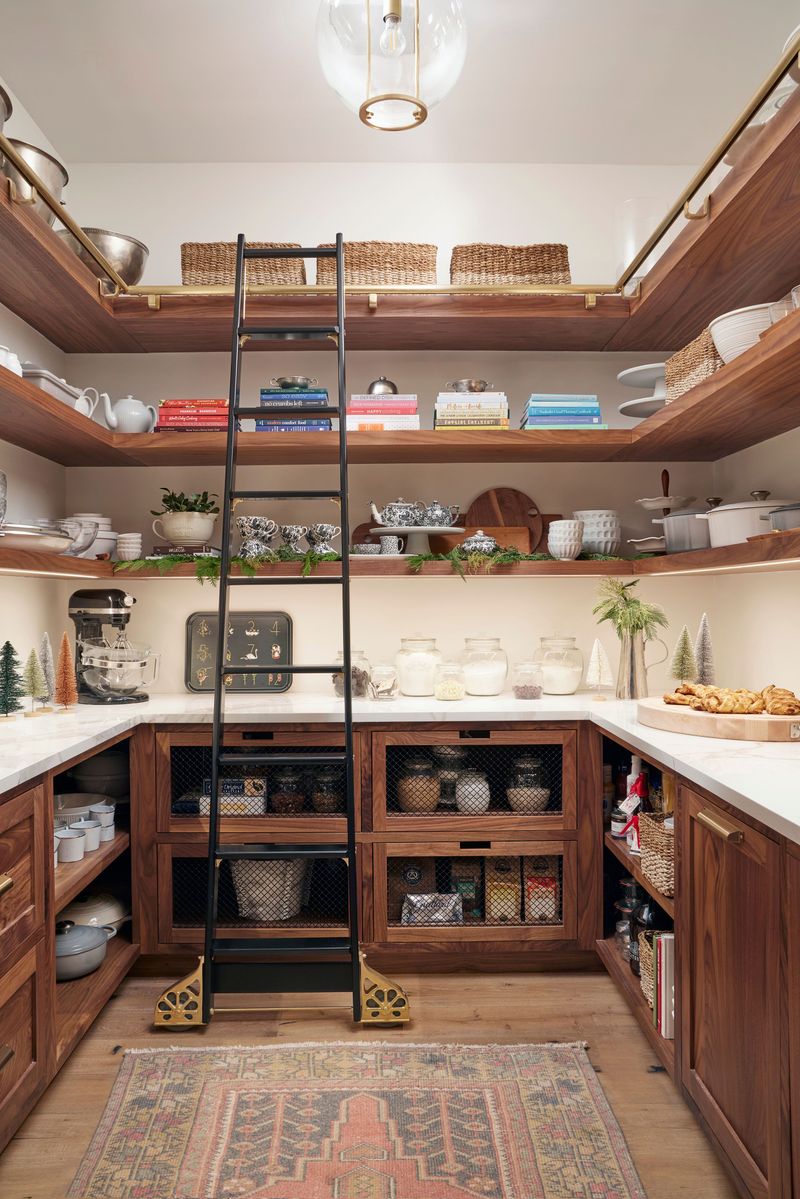
Walk-in food storage spaces once graced many homes, offering dedicated areas for preserves, appliances, and bulk items. Unlike modern cabinets that expose everything to guests, these rooms kept visual clutter hidden while providing ample organization.
Pantry rooms create breathing space for the main kitchen, allowing it to shine as a social hub. Modern versions can incorporate charging stations for gadgets and dedicated baking centers.
3. Farmhouse Sinks With Soul
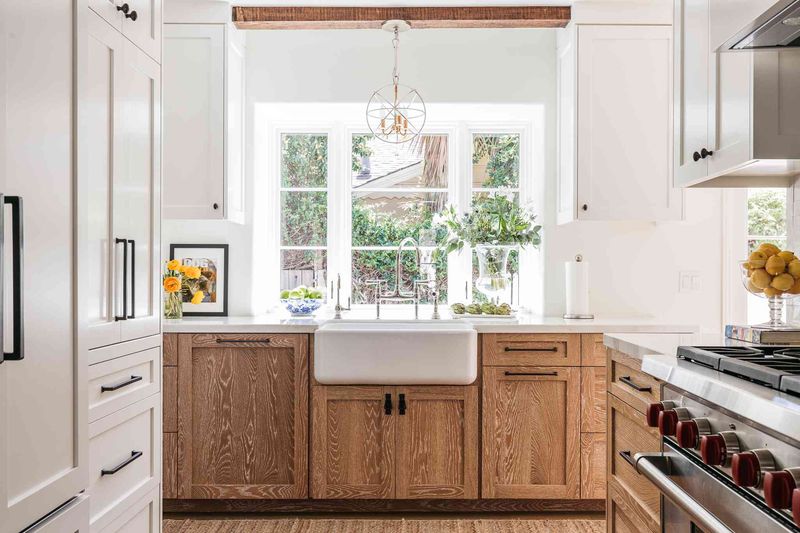
Deep, wide ceramic sinks with exposed apron fronts offer both beauty and practicality. Their generous dimensions accommodate large pots and baking sheets with ease, while their classic appearance adds instant character.
Originally designed for homes without running water, farmhouse sinks now serve as statement pieces that blend seamlessly with various design styles. Their timeless appeal transcends trends, making them worthy investments for kitchen renovations.
4. Plate Racks Worth Showing Off

Open plate storage displays beautiful dishware while keeping frequently used items accessible. Unlike closed cabinets, plate racks celebrate everyday objects as design elements, adding personality and color.
Wooden or metal racks mounted above sinks or countertops create visual interest and encourage curation of special pieces. Modern versions can incorporate lighting to highlight collections while maintaining the practical benefit of quick access.
5. Hoosier Cabinets: The Original All-in-One
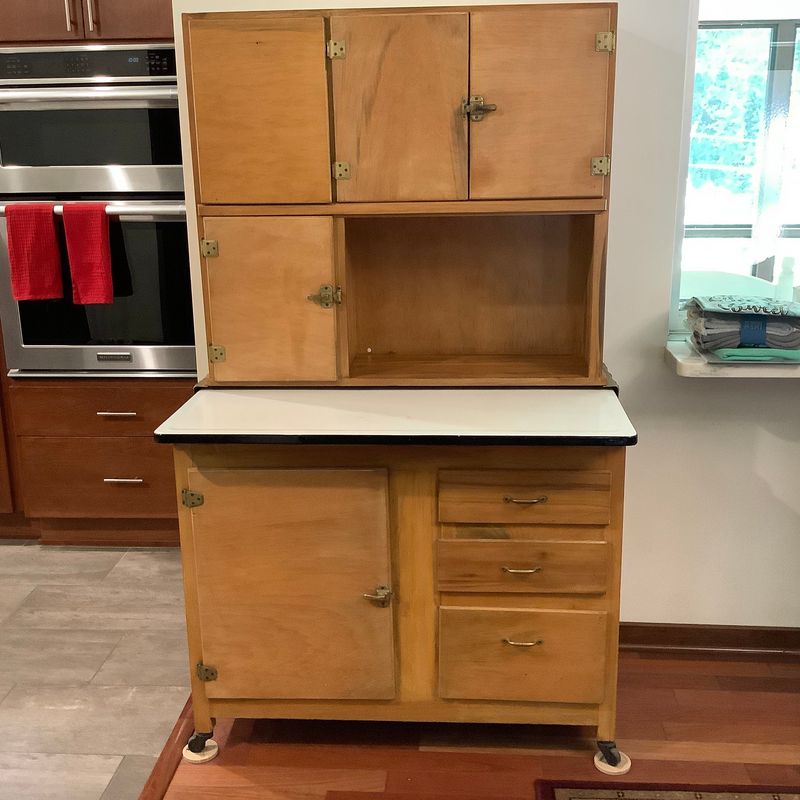
Freestanding kitchen workstations from the early 1900s combined storage, workspace, and organizational features in one beautiful furniture piece.
Complete with flour sifters, spice racks, and pull-out workspaces, these cabinets maximized function before built-ins became standard. Hoosier cabinets allow personalization without major renovations and can travel with owners between homes.
6. Dutch Doors: The Original Open Concept
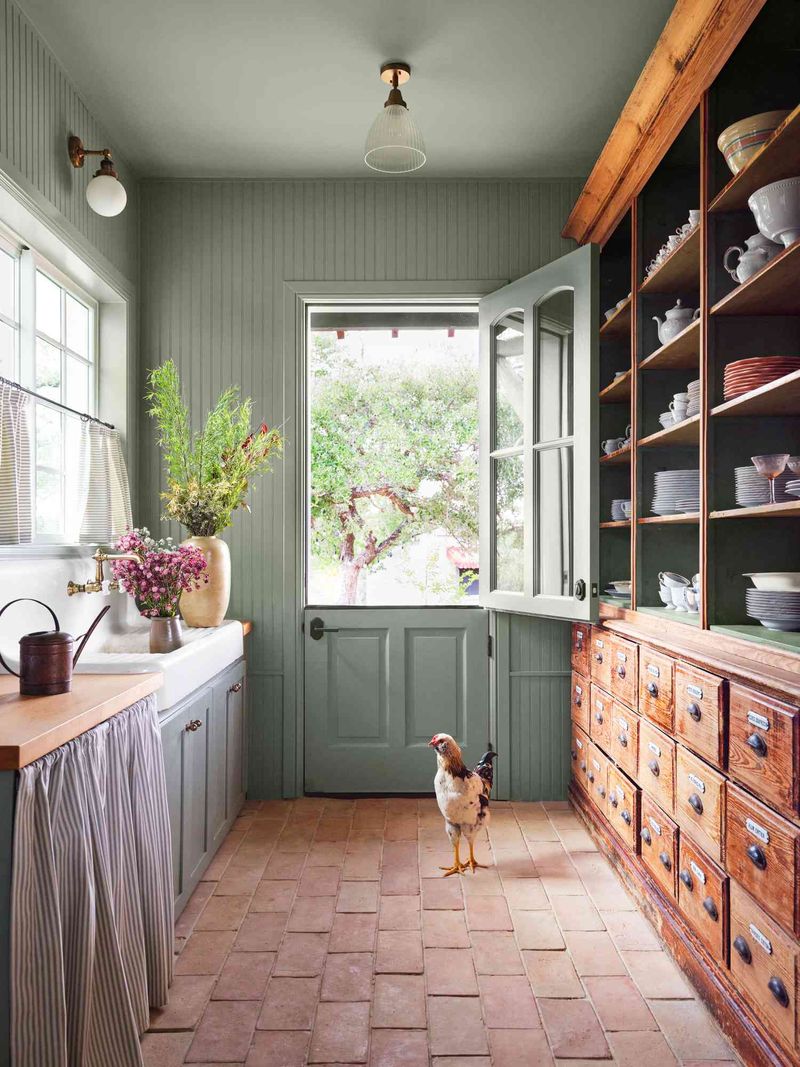
Split horizontal doors allowed fresh air while keeping children and pets safely inside. The bottom half remained closed while the top opened independently, creating natural ventilation and connection to outdoor spaces.
Kitchen dutch doors facilitated passing dishes to dining areas or outdoor entertaining spaces. Beyond practicality, they add architectural interest and vintage charm that standard doors simply can’t match.
7. Cookbook Nooks That Make Reading Delicious
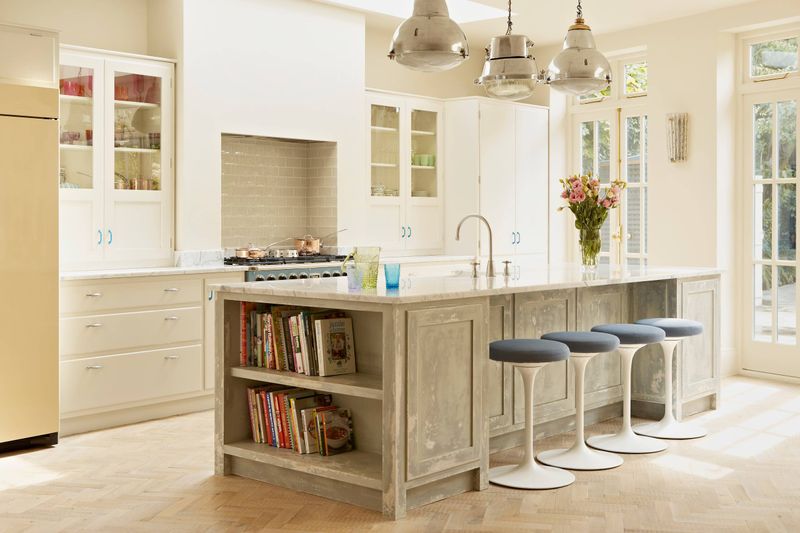
Dedicated spaces for culinary inspiration have largely disappeared from modern kitchens. Small recessed shelves or purpose-built cubbies once kept favorite recipes close at hand without sacrificing counter space.
Rather than hiding cookbooks in cabinets or relegating them to other rooms, these charming nooks celebrated the joy of cooking. Modern versions could incorporate tablet holders while maintaining the traditional appeal of displaying cherished family recipes.
8. Pull-Out Breadboards With Purpose
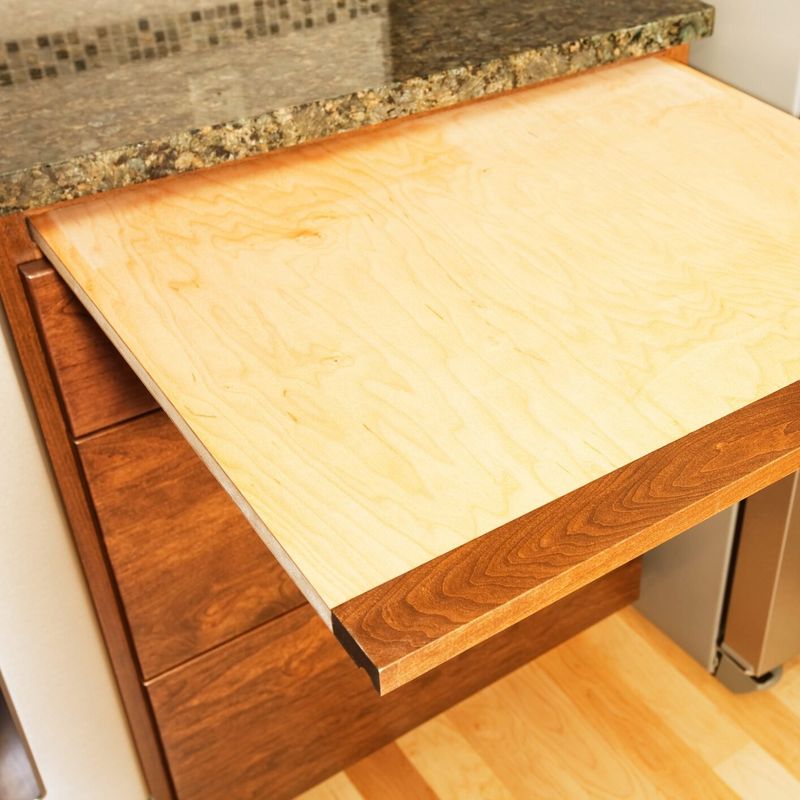
Integrated wooden cutting surfaces that slide seamlessly into cabinetry once offered dedicated workspace without consuming precious counter real estate. When not needed, these breadboards disappeared completely, maintaining clean kitchen lines.
Made from maple or other hardwoods, these surfaces provided ideal spots for kneading dough or chopping vegetables. Modern versions could incorporate antimicrobial materials while maintaining the space-saving genius of the original design.
9. Kitchen Islands On Wheels
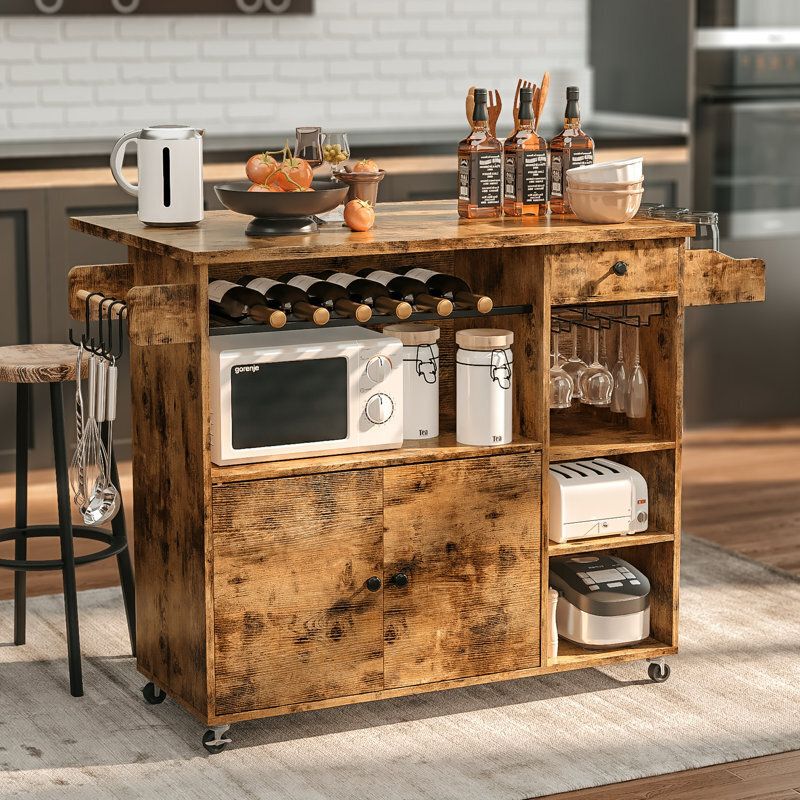
Movable work surfaces offered flexibility before permanent islands became kitchen staples. Rolling butcher blocks and carts allowed homeowners to reconfigure spaces for different tasks or entertaining needs.
Unlike built-in islands that commit to one layout forever, these versatile pieces adapted to changing requirements. Modern versions combine vintage industrial aesthetics with contemporary features like electrical outlets and specialized storage for ultimate functionality.
10. Pie Safes: Pretty And Practical
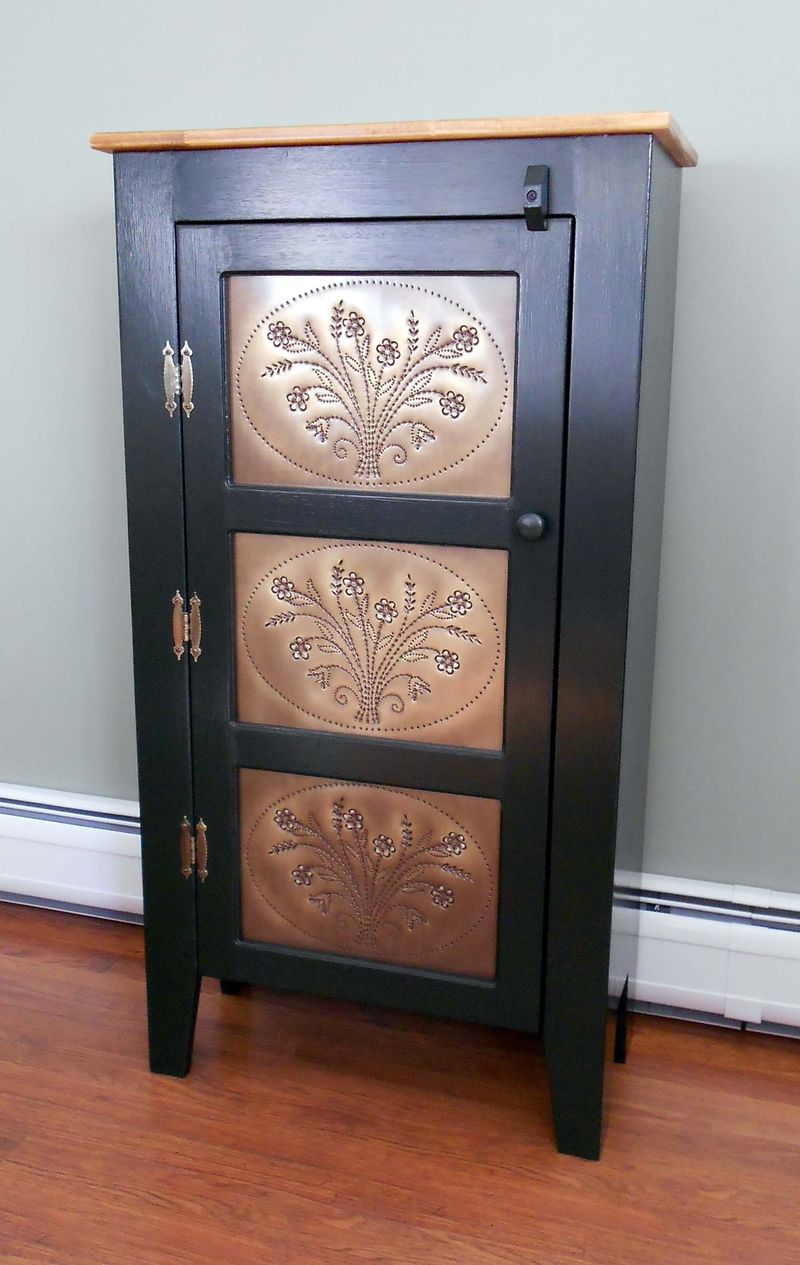
Ventilated storage cabinets protected baked goods from insects while allowing air circulation. Decorative punched tin panels served both functional and aesthetic purposes, adding subtle pattern to kitchen spaces.
Beyond their original use for cooling pies, these charming pieces offer versatile storage for modern kitchens. Contemporary versions could store breads and produce that shouldn’t be refrigerated, combining old-world charm with everyday practicality.
11. Scullery Sinks For Serious Clean-Up
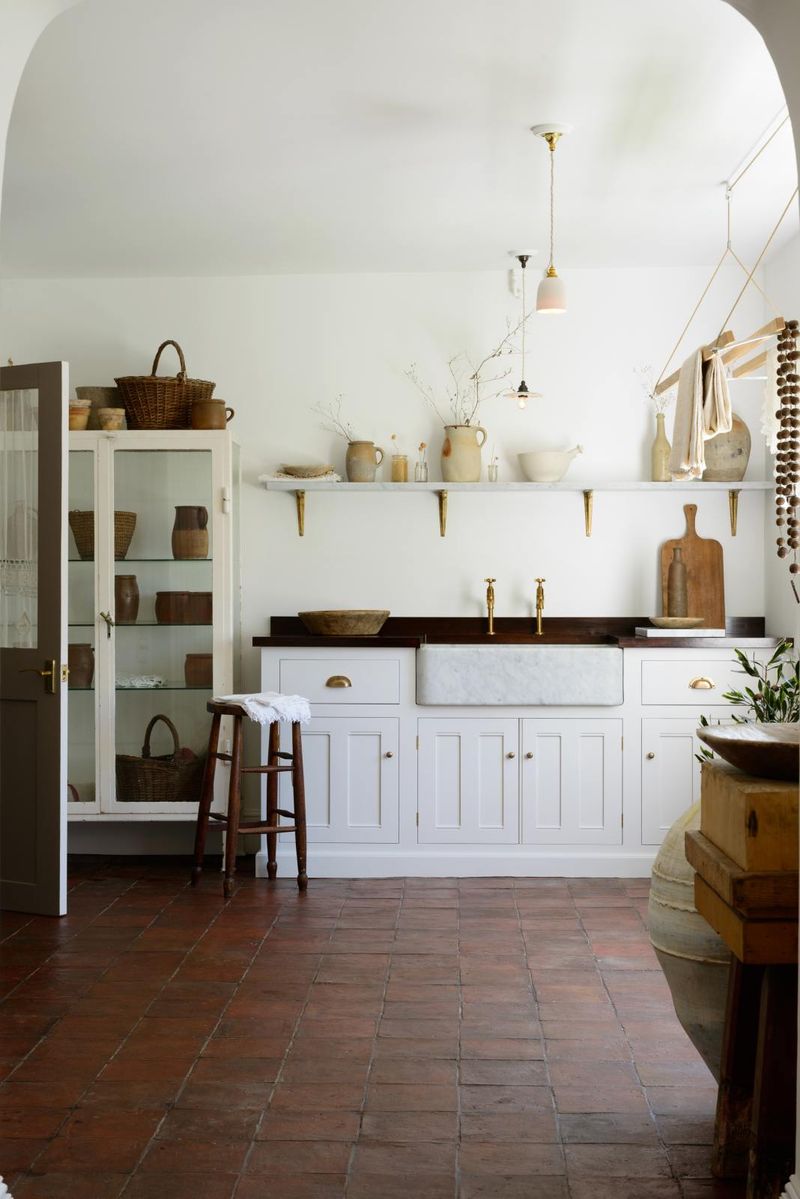
Secondary washing areas once handled messy prep work and dirty dishes, keeping the main kitchen presentable for guests. These hardworking spaces included deep sinks and ample countertops dedicated to cleaning tasks.
Modern homes could benefit from this separation of functions, especially for entertaining. A contemporary scullery provides a place for caterers to work behind the scenes or for hiding dirty dishes during dinner parties.
12. Built-In Kitchen Desks That Work
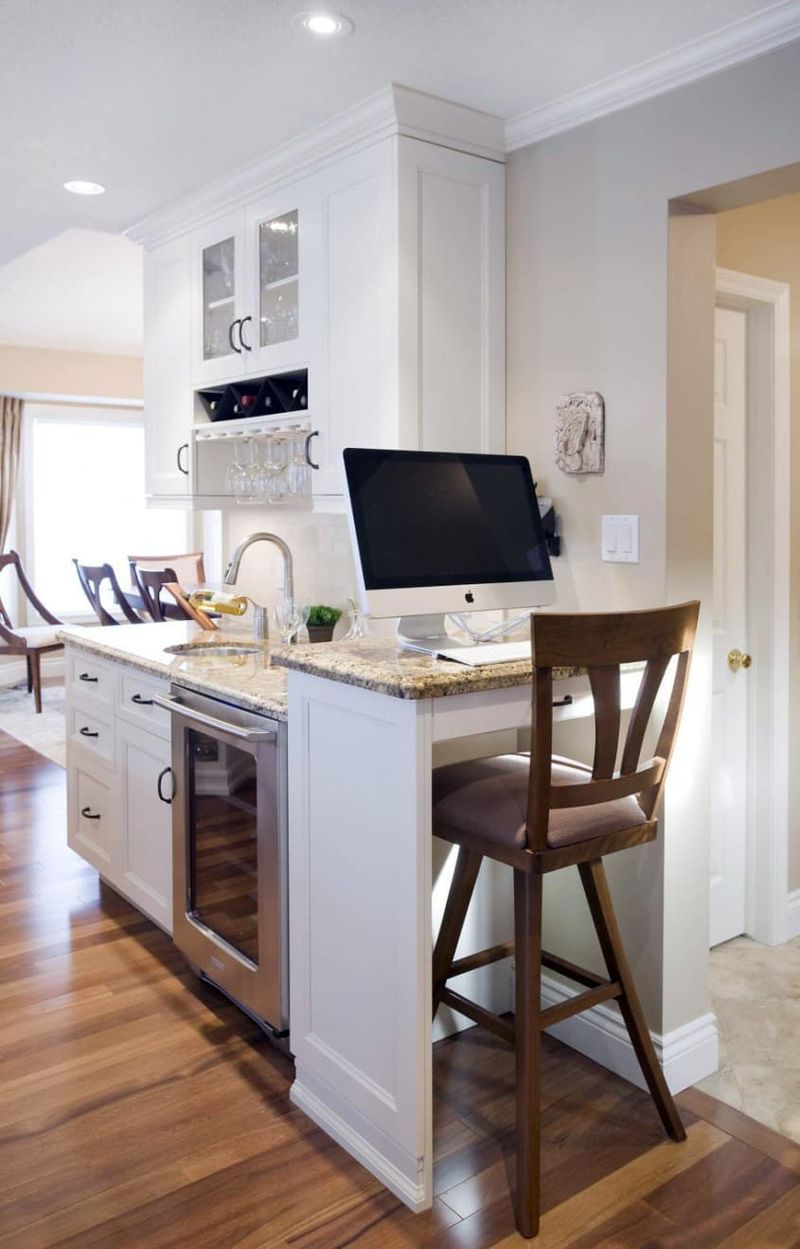
Small dedicated workspaces for household management kept paperwork organized before the digital age. Often tucked into a corner, these mini-offices provided spots for writing grocery lists, paying bills, or planning meals. The return of this feature acknowledges kitchens remain command centers for family organization.
13. Glass-Front Refrigerators That Show Off

Transparent doors allowed checking contents without opening, saving energy while creating visual interest. Early models showcased the novelty of refrigeration technology rather than hiding appliances behind matching cabinetry panels.
Modern glass-front refrigerators bring back this practical feature with improved efficiency. Seeing food prevents forgotten items and encourages thoughtful organization, making these statement pieces both beautiful and functional.
14. Pass-Through Windows For Easy Entertaining
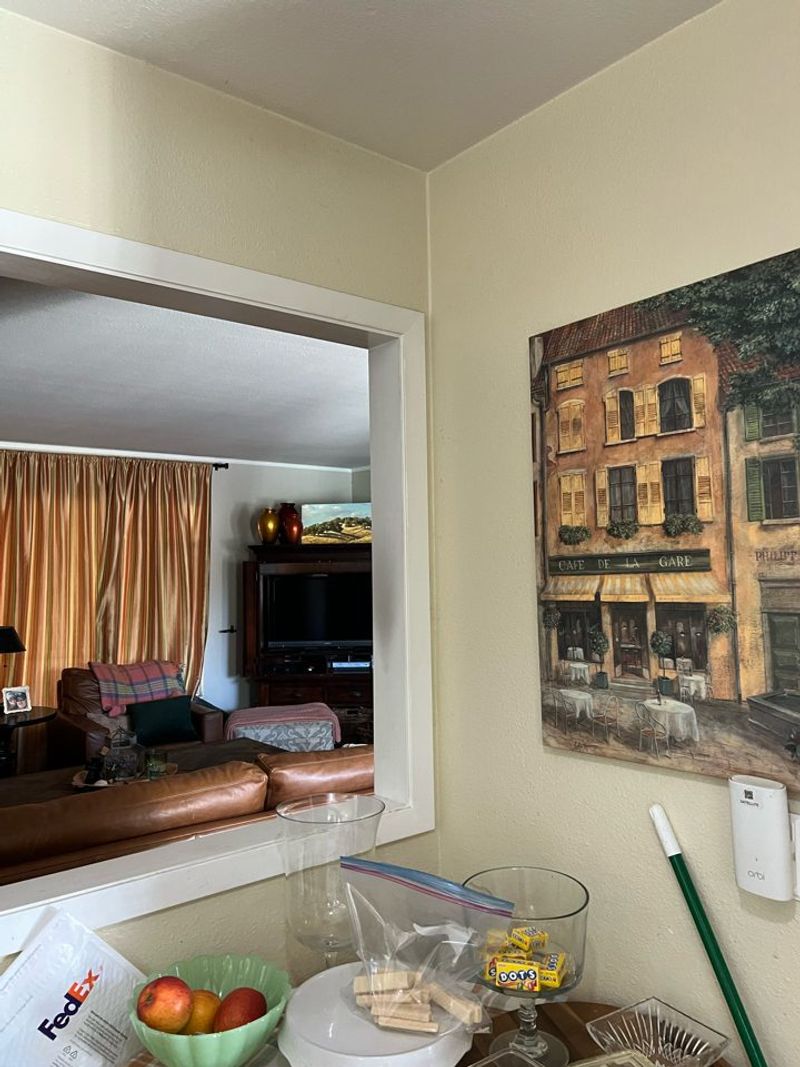
Interior openings between kitchens and dining rooms facilitated serving without constant door traffic. Often featuring counter space and sometimes decorative shutters or glass, these clever architectural features maintained connection between spaces.
Updated versions might incorporate sliding panels for noise control while preserving the convenience of passing food directly to dining areas.
15. Warm Wood Countertops With Character
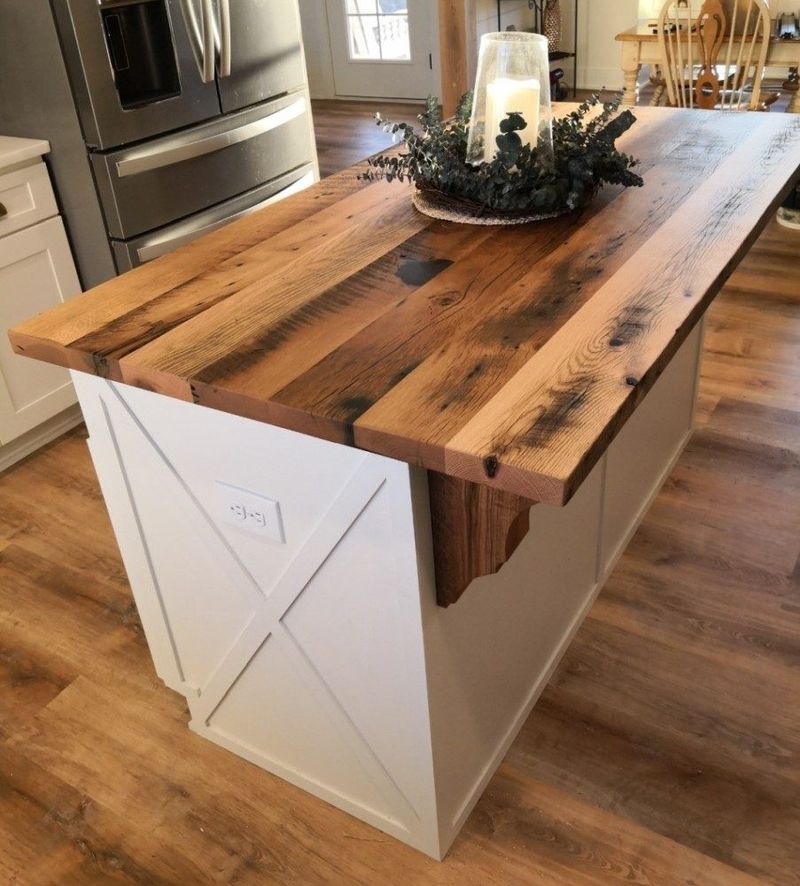
Natural butcher block surfaces brought warmth and practicality before stone became ubiquitous. Wood counters developed rich patinas over time, telling stories of family meals and holiday preparations through their gentle wear patterns.
Unlike cold marble or granite, wood feels naturally warm to the touch. Modern treatments allow wooden countertops to maintain their character while meeting contemporary standards for cleanliness and durability.
16. Warming Drawers Worth The Wait
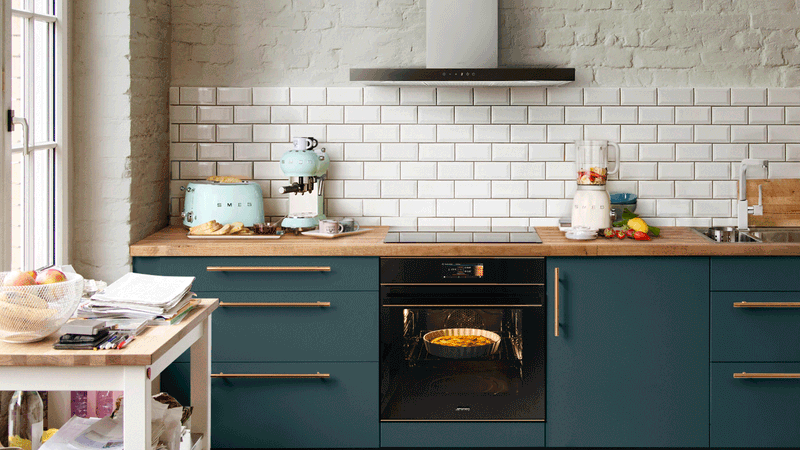
Built-in heated storage kept meals and plates at perfect serving temperature. Originally powered by residual heat from wood-burning stoves, these practical features ensured family dinners stayed delicious regardless of timing challenges.
Modern kitchens often lack this thoughtful element despite our busy schedules making coordinated mealtimes difficult.
17. Faux-Brick Vinyl Flooring That Fooled No One
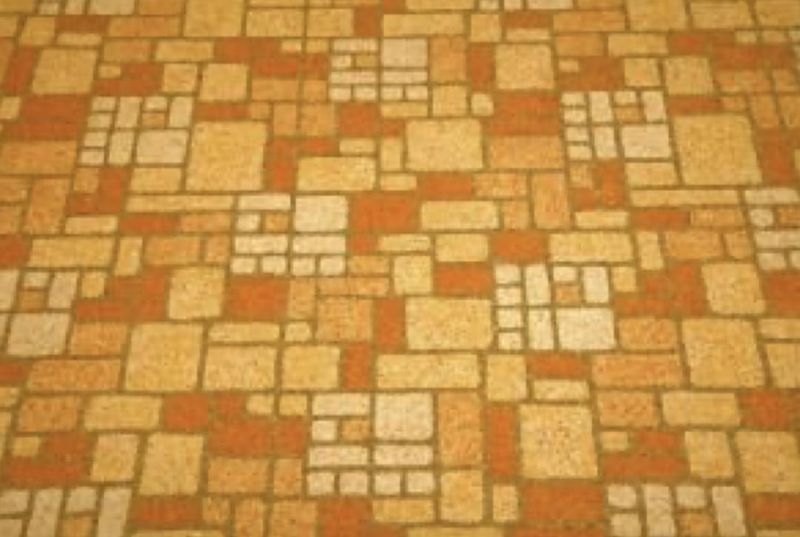
Printed vinyl flooring attempted to mimic brick textures but created unconvincing, maintenance-prone surfaces. Popular in mid-century kitchens, these floors featured unrealistic patterns and colors that aged poorly.
The material often curled at edges and trapped dirt in faux grout lines. While today’s luxury vinyl can beautifully imitate natural materials, those early brick-pattern attempts remain design disasters that designers hope never make a nostalgic comeback.
18. Ceiling-Mounted Pot Racks That Threatened Guests
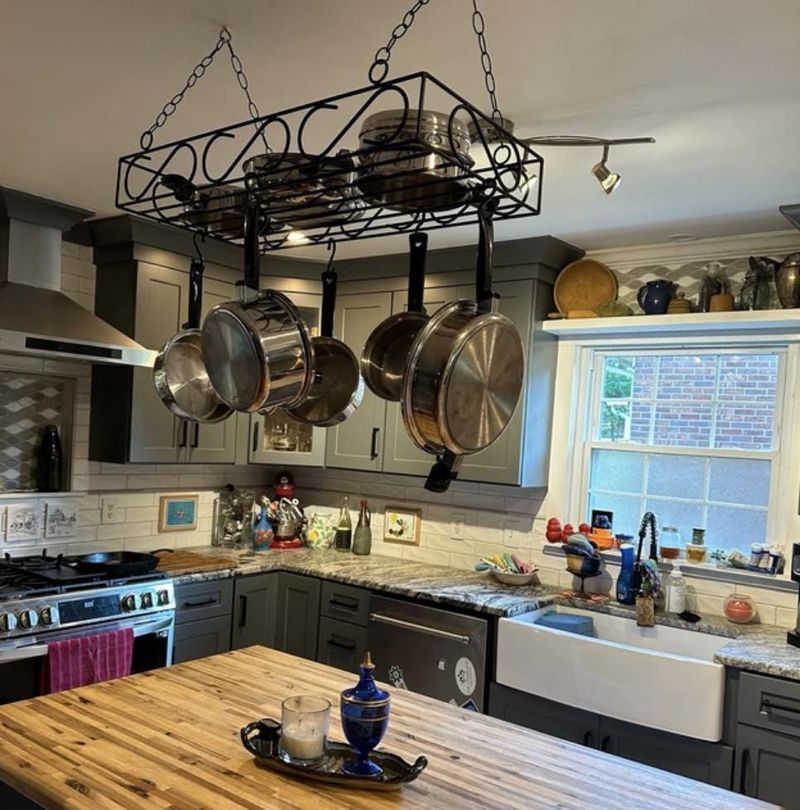
Hanging cookware storage loomed dangerously over kitchen islands and dining areas. While meant to showcase copper collections and save cabinet space, these installations created anxiety for anyone seated beneath them.
Dust collection on rarely-used items added another practical problem. Modern kitchens benefit from more thoughtful storage solutions that don’t involve suspending heavy objects over gathering spaces or requiring constant polishing of decorative cookware.
19. Sponge-Painted Walls With Too Much Texture
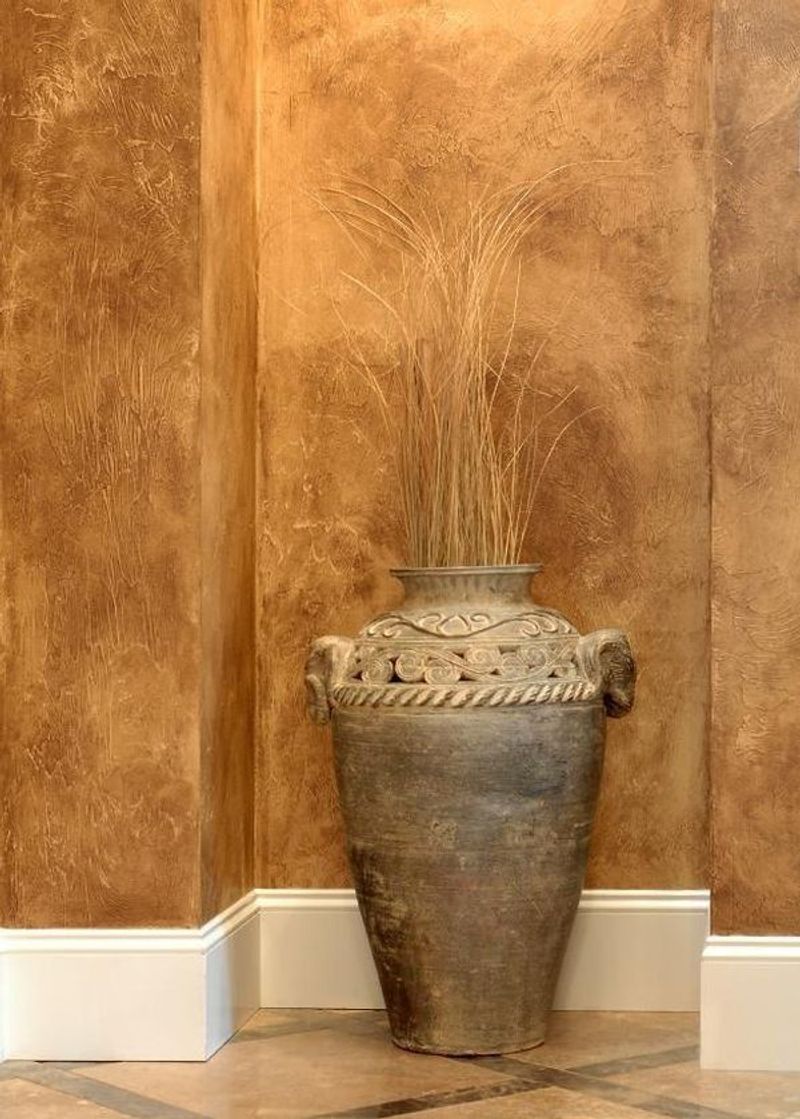
Multi-colored paint techniques created busy, dated wall finishes that dominated 1990s kitchens. Often featuring clashing Mediterranean-inspired color combinations, these labor-intensive finishes proved nearly impossible to touch up or modify.
The uneven texture collected grease and was difficult to clean in kitchen environments. While texture can add interest to walls, the particular combination of sponged colors and kitchen functionality created maintenance nightmares best left in design history.
20. Cabinet Soffit Dust Collectors
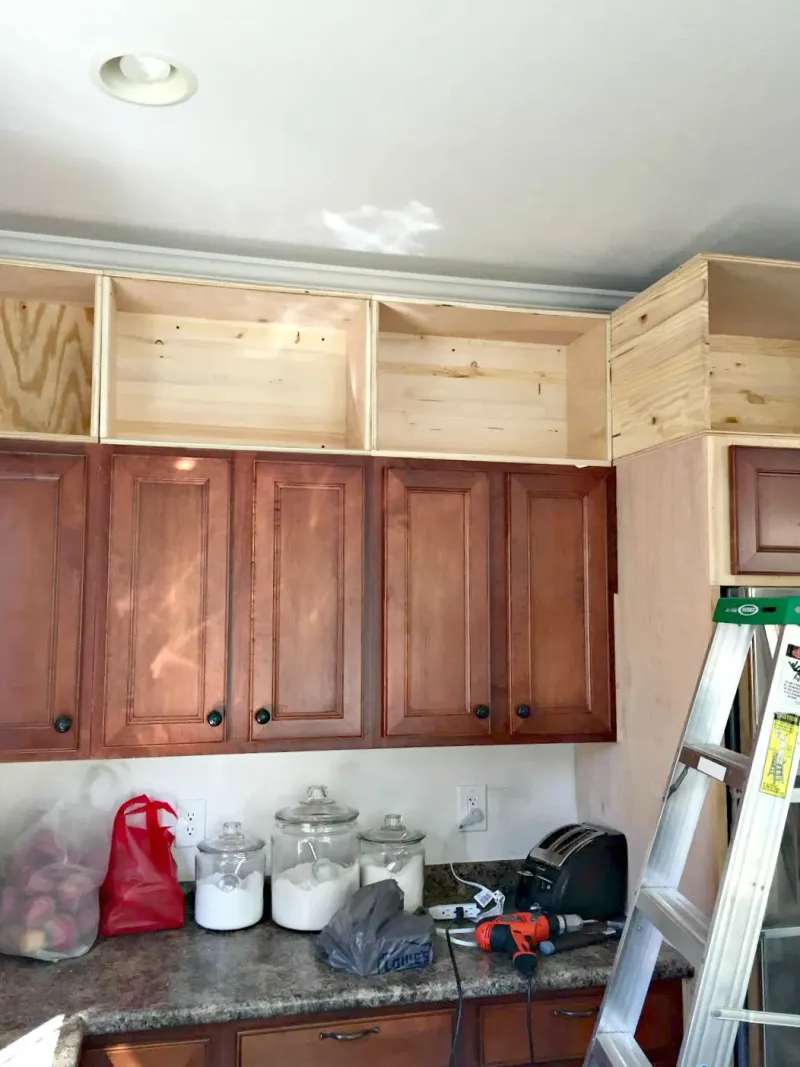
Dead space between cabinets and ceilings created awkward gaps that served no purpose except dust collection. These soffits made kitchens feel smaller and more closed-in while providing no storage or aesthetic benefit.
The in-between soffit solution represented a compromise that satisfied neither function nor form, making it a design element best forgotten.

